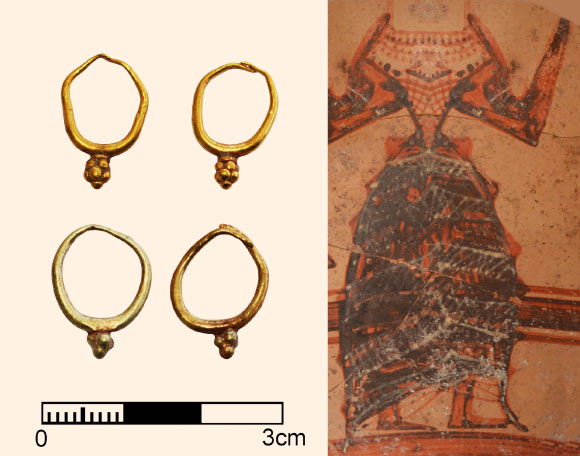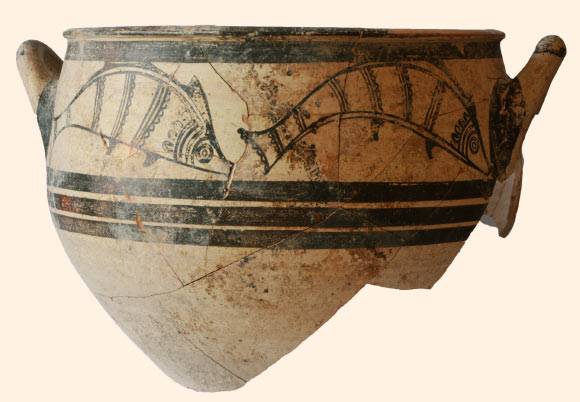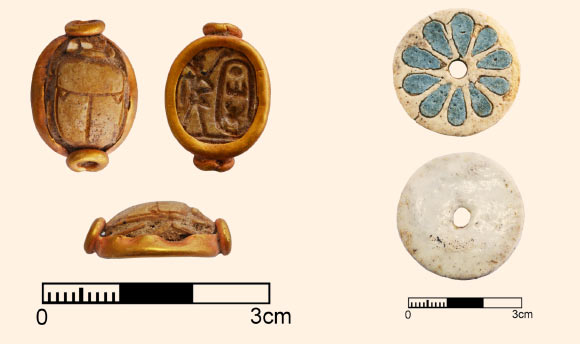
PHOTO: sci-news.com
DROMOAXIA VIZATZIA, CYPRUS – a 3,200 year-old tomb discovered in one of the oldest cities on Cyprus is giving archaeologists a valuable network of clues to tie together the trade networks of the ancient world.
Hala Sultan Tekke, or Dromolaxia Vizatzia was a bronze-age city on Cyprus that reached its peak around 1600-1150 BC.
“In May-June we discovered a city quarter from around 1250 BC,” team leader Professor Peter Fischer said, “and outside the city we found an incredibly rich grave, one of the richest in Cyprus from this period, and an offering pit next to it.”
Professor Fischer says it’s quite unique to find a separate burial site from the Bronze Age for this area. Most people living in the city at the time were buried somewhere inside it.
According to the researchers, the grave is a family tomb. It’s home to the remains of eight children under the age of ten and nine adults. The oldest adult was just 40 years old.
“The life expectancy was much shorter back then than it is today,” Professor Fischer explained.
The family they belong to was extremely wealthy, if the grave goods they left their relatives is any indication. The archaeologists working on the site have found over 100 ceramic vessels and several gold objects, including beads, earrings, a diadem, and even Egyptian scarab beetles. They’ve also found five cylinder seals. Some of these are local, others were made in Syria and Mesopotamia. They’ve also found a wealth of gemstones and a bronze dagger.

PHOTO: sci-news.com

PHOTO: sci-news.com
However, it’s not the gold treasure that the archaeologists are interested in, but something far more ordinary. They assign the highest historical value to the 140 complete ceramic vessels they’ve found at the site. Why? Well, most of them are decorated with beautiful illustrations of mythology and daily life. One depicts people sitting in a horse drawn chariot, another is a depiction of a woman wearing a rich dress. Other vases were painted with animals and religious symbols.
“The pottery carries a lot of archaeological information. There were for example high-class Mycenaean imports, meaning pottery from Greece, dated to 1500–1300 BC,” Professor Fischer said, “The motif of the woman, possibly a goddess, is Minoan, which means it is from Crete, but the vase was manufactured in Greece. Back in those days, Crete was becoming a Greek colony.”
There is one other find that has got the archaeological community buzzing. The archaeologists found a stone, gold-mounted scarab with a hieroglyph inscription that spells out “men-kheper-re” next to an illustration of a pharaoh. According to historians, using this find, the tomb can be tied to Egypt’s most powerful pharaoh, Thutmose III. He ruled during 1479-1425. Under his rule, Egypt reached a golden age and its assets sprawled across the known human world.
Professor Fischer also says they found evidence within the city itself of large-scale manufacturing and dying of expensive purple-textiles. This bronze-age city on Cyprus was, then, a major and wealthy trade center for the known human world.
“These products were used in the trade with the high cultures in Egypt, Anatolia, the Levant, Mesopotamia, Crete and Greece,” Dr. Fischer said, “which explains the rich imported finds.”
We generally think of all the different empires in the ancient world as being their own, contained bubble, but the truth is in archaeological finds like this one on Cyprus. The powerful empires were rich and traded together throughout their existence. They had political controversies and alliances and intrigues that were just as complex as our own today. They each had their own specialties, and they used them to their advantage, and what was exotic to one empire was commonplace in another. It’s finds like this that remind us that humans are, have been, and always will be the same at our core.

